The Sun Bed is a cherished spot in my backyard garden because it is the only space that gets six hours of sun. The bed was created three years ago when we demolished a gazebo that occupied that site. For the past couple of years, I’ve been slowly adding sun perennials that won’t grow in most of the garden because the positioning of the house only allows morning sun and afternoon shade.
The Sun bed is bigger than it looks. Last year I cheated and filled much of the bed with annuals, namely zinnias and marigolds. They did so well in the space that I had to quell a plant riot when the rumor circulated that I might consider annuals for the coveted Plant of the Year Award. I quickly squashed that rumor, since only perennials qualify, but that doesn’t mean I didn’t appreciate the beautiful and dramatic colors that the annuals added to the bed. When I removed the dead annual plants from the bed late last fall, I promised myself I would finish the bed design this year, filling more of the space with perennials.
The first unexpected and unplanned change is that Linda suggested I transplant three or four coneflowers from the front yard garden to the back garden. I greedily dug up four plants, and they have found their way to the sun bed. Because of the strong sun in the front yard, the plants are twice the size of the coneflowers I already have in the sun bed. My bet is that I’ll either lose two or three of the plants, or they will “sleep” for a season or two as they adjust to the different light and soil conditions. I happen to love coneflowers, and they are an obvious foundational plant in any sun perennial garden. Fingers crossed. (Note: Three of the four coneflowers are already flopping as I write. Again, time will tell. I’m not overly optimistic.)
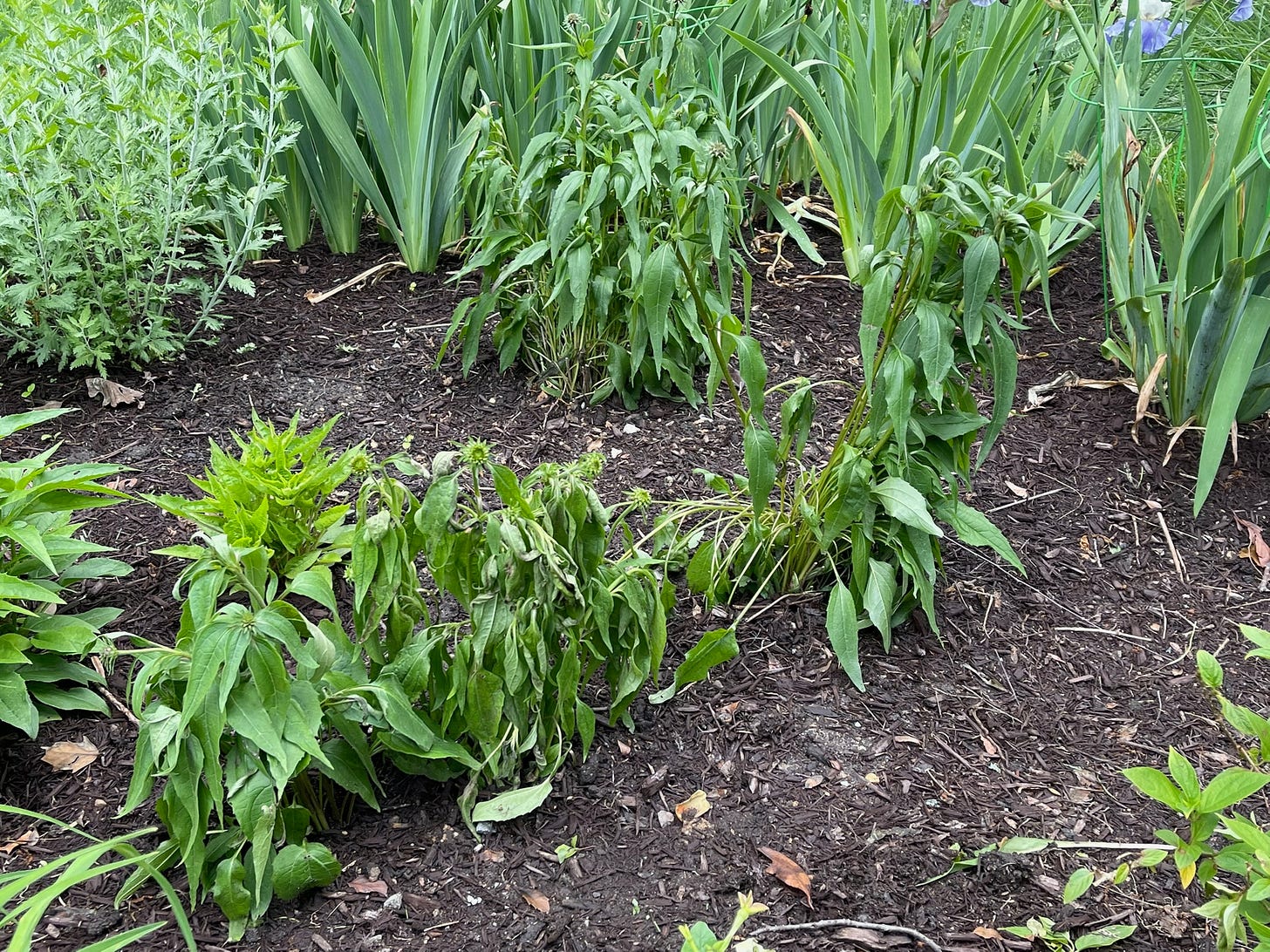
Another plant I transplanted from Linda’s garden in the front of the house is a mystery. Linda isn’t positive what it is, other than she thinks it has white petals. I used my PictureThis app to find out the plant is a Stoke’s aster (Stokesia laevis.) My research tells me that Stoke’s asters have a variety of cultivars in different colors. Google shows many of them as purple, although I’m sure they come in a white variety as well. Over the past few days, the plant seems to have responded well to being transplanted, so we shall see what happens.
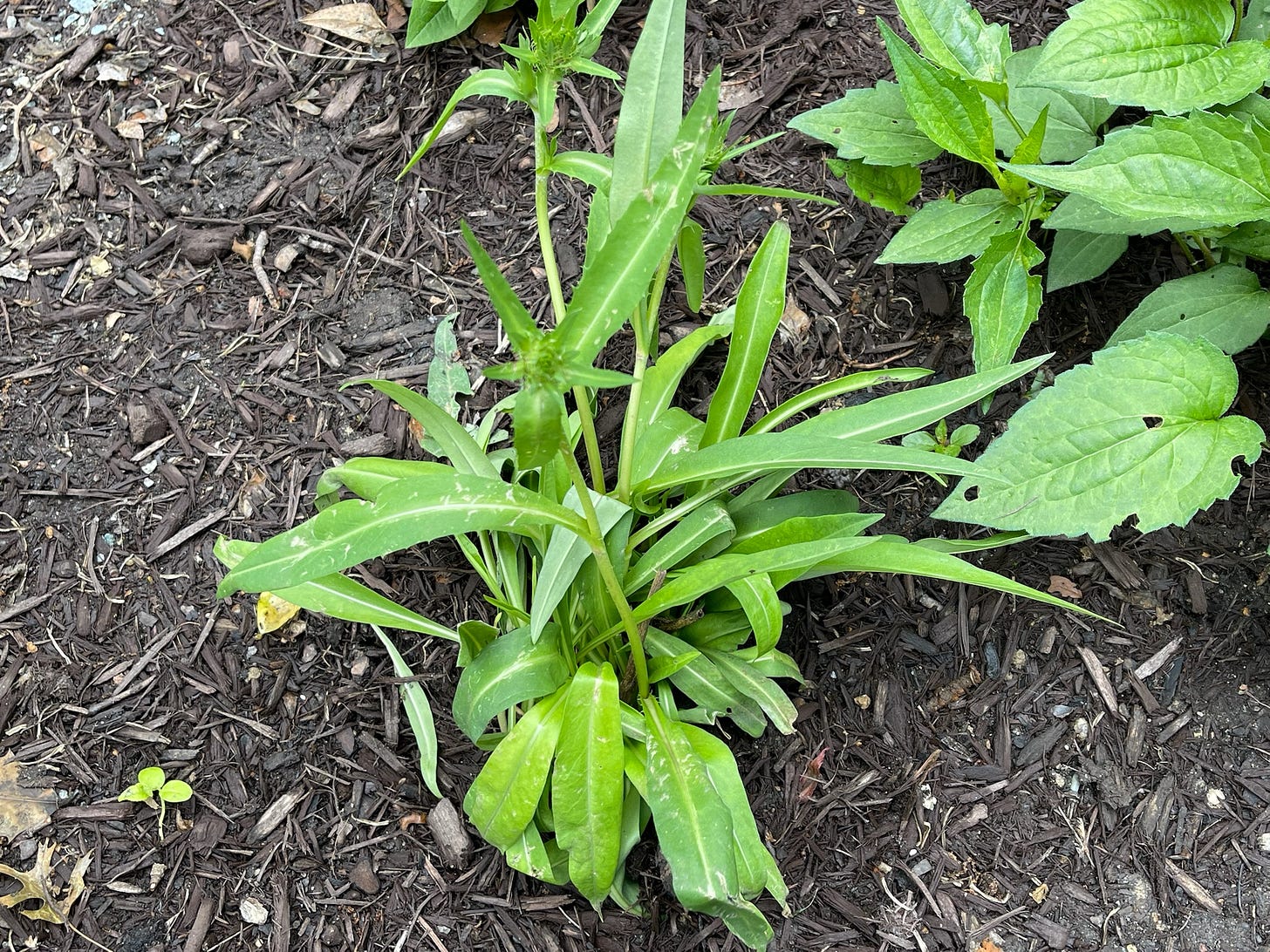
I have added several new plants that were purchased at Sun Nurseries. I finally pulled the trigger and purchased a pink muhly grass. According to the little card in the pot, pink muhly grass is “an easily grown, non-invasive, native bunch grass that is drought- and salt-tolerant. Airy, upright sprays of purple to pink inflorescences are a breathtaking addition to the fall landscape.” (For the record, according to Google, “inflorescence refers to a cluster or group of flowers arranged on a plant’s stem or axis.”) The plant grows to 18 to 36 inches tall and a similar dimension in width. I planted it in the back of the bed where I used to have my pampas grass, which didn’t last long before its demise. Now the game begins. To begin with, the back of the bed gets less light than the front, which is problematic for a plant that requires full sun. I’ve had many sun plants thrive in spaces with less than full sun, so the location of the grass is something of an experiment. I’m also hoping the strong winds that occasionally whip through the garden won’t have an adverse impact on the grass. It’s much shorter than the pampas grass so maybe it will thrive. Its neighbor in the bed, maiden grass, is doing just fine.
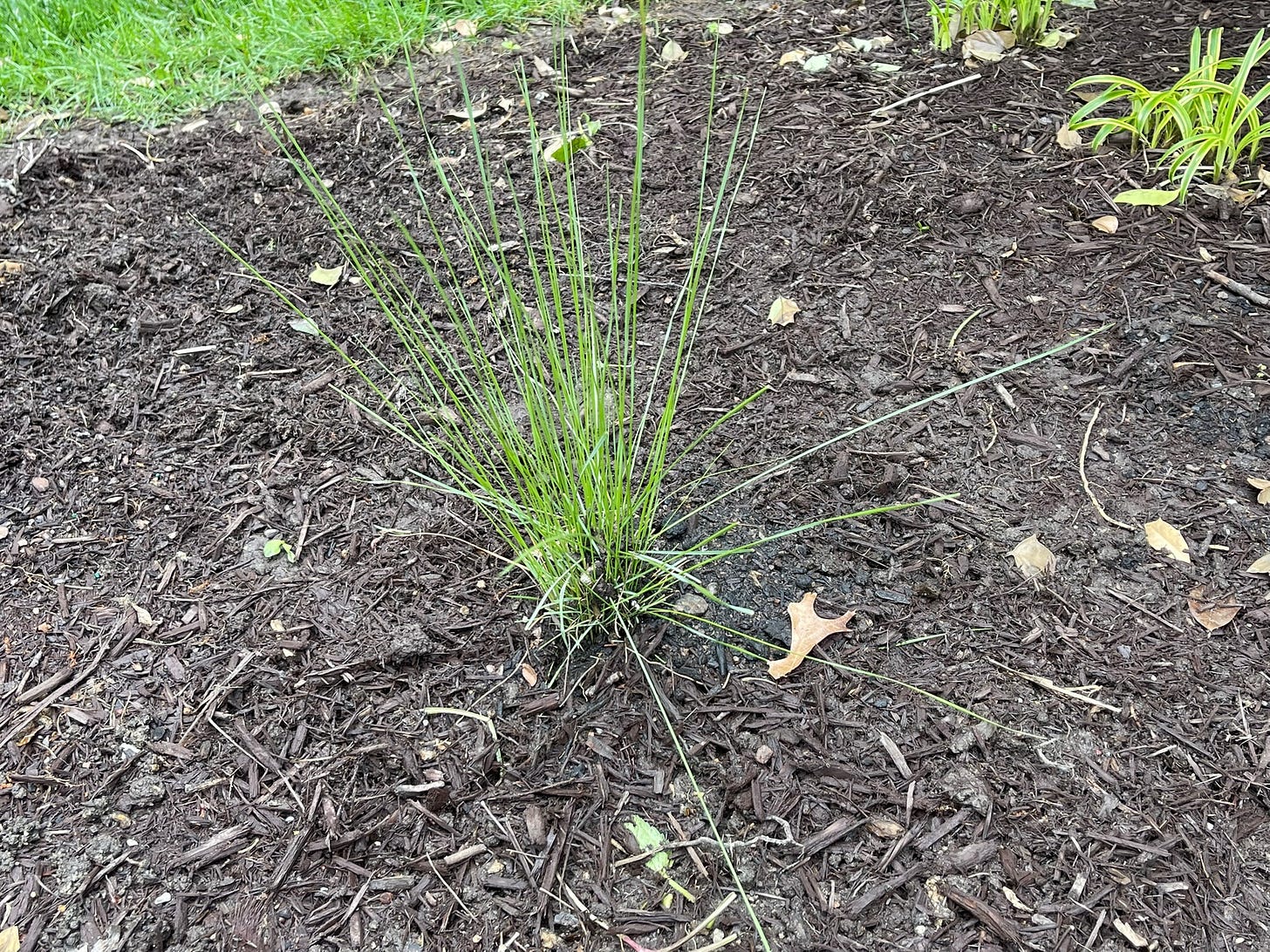
Also new to the bed are two hardy geraniums, otherwise known as cranesbill, called Azure Rush. As you might have guessed, there’s a story here. The sun bed is right next to the sun side of the waterfall bed, which is home to a bigleaf hydrangea, plumbago, ornamental onions (allium), and most recently, garden phlox, all of which require at least partial sun. One plant that I’ve tried to get started for several seasons, with no success, is a geranium hybrid called Rozanne. I don’t know why they’ve failed so consistently. It could be the soil, the partial sun, the fact that they’ve been consistent rabbit fodder, or…fill in the blank. Azure Rush cranesbill is the next generation plant after Rozanne. It is supposed to only require partial sun, and of interest to me, is promised to spread less than Rozanne. I’ve purchased two Azure Rush cranesbill and planted them towards the front of the bed. I’m hoping this time they will take, because the Azure Rush are stunningly beautiful plants with light purple flowers.
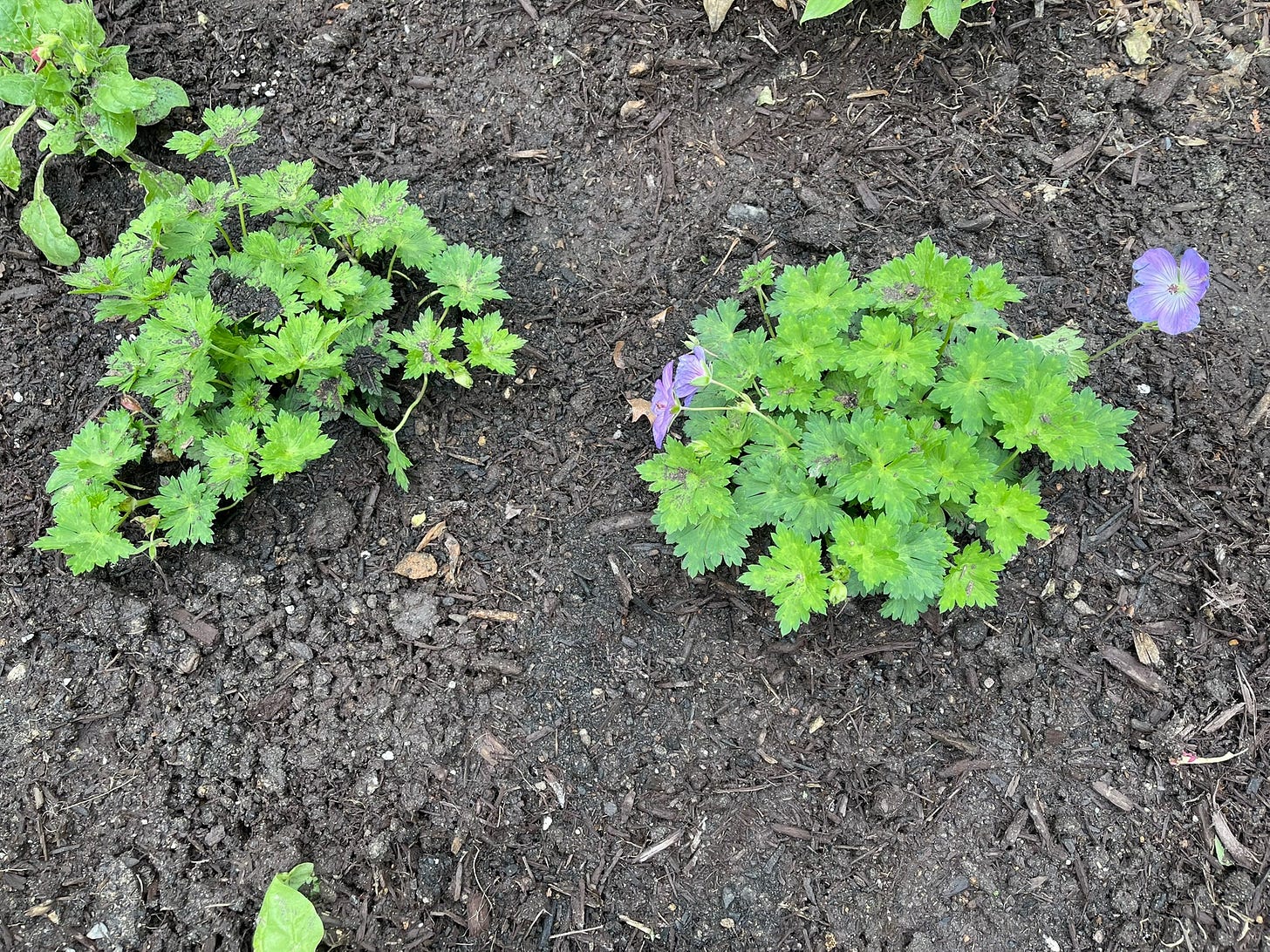
After last year’s incredible success with annuals, you might not be surprised that I decided to fill some gaps in the bed with a few annual plants. On a recent trip to Maryland Flower and Foliage Company, a nursery located near White Marsh, Md., that has a local reputation for high quality plants and competitive prices, I purchased eight nicotiana plants. Embarrassingly I can’t tell you much about them other than the card says plant them in sun or partial sun, 12 to 14 inches apart. All it says about the height is that “it varies by plant variety.” I thought I would be able to find out the details when I got home, but it seems there are four different varieties of nicotiana: tobacum, alata, rustica, and glauca. I reached out by email to Maryland Flower to ask them for more information, and to my surprise got a response from a gentleman named Scott Welsh. Unfortunately, Scott didn’t answer my question specifically, so I’ve written back and will let you know if I get a reply. Perhaps the most important information is I paid $2.50 per plant, and they are gorgeous. They will look great in the front of the bed, hopefully.
Lastly, I tried an experiment with the yarrow that has been spreading in the bed. I love yarrow, with its flat flowers that soar above the basal growth of the plant. But I wasn’t prepared for yarrow’s invasive nature, as it quickly spread throughout the bed. My yarrow has been sleeping and creeping for a couple of seasons, and while it has thrown off a few small flowers, it has a highly developed root system that portends a leap sometime this year, or maybe next. My solution was to dig up the yarrow and transplant it to a pot in the back middle of the bed. It’s a fair-sized pot, with a neutral beige color, and I’m hoping if the potted yarrow blooms it will add a good bit of vertical interest to that part of the bed.
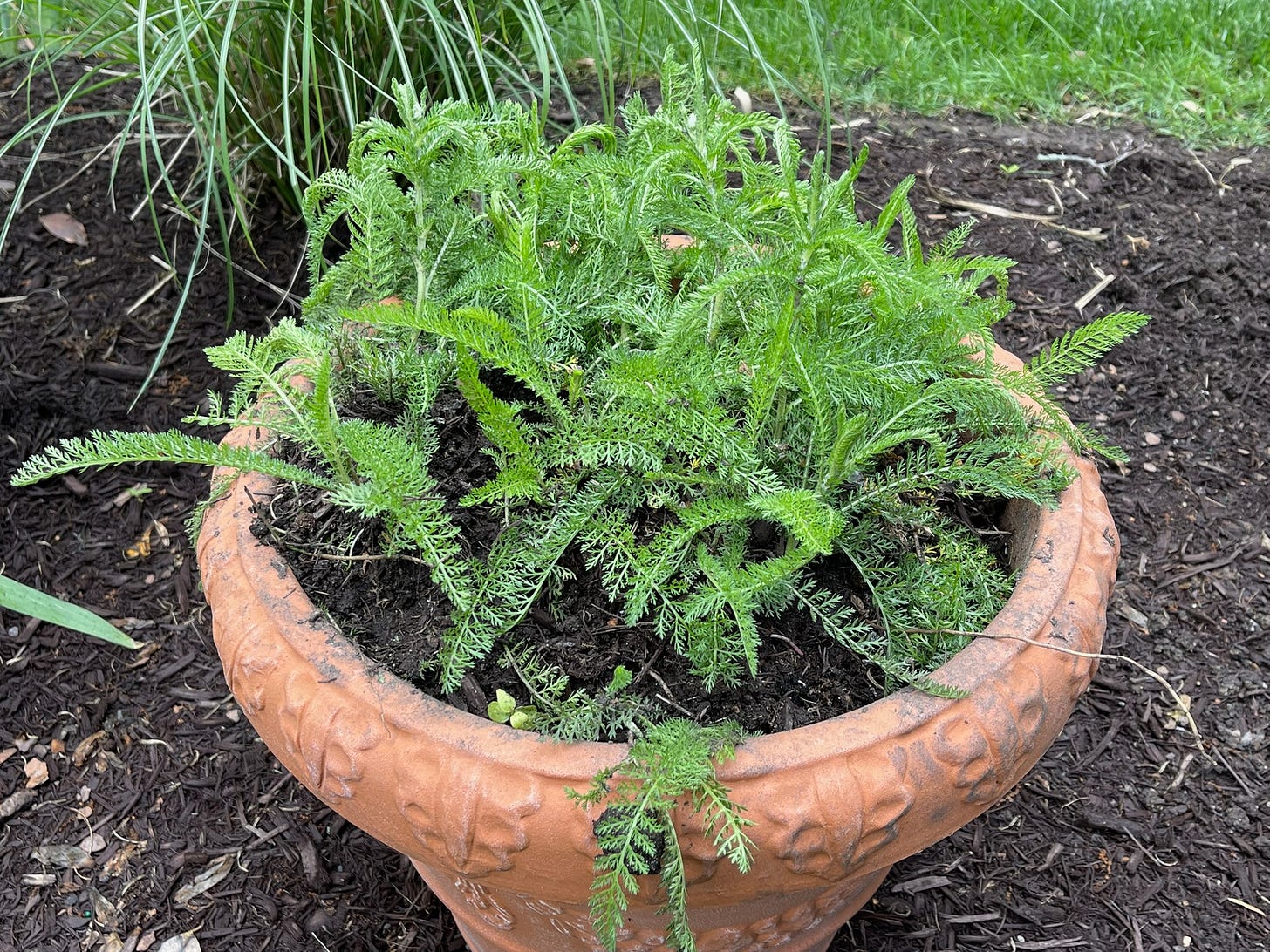
The final score for the bed is nicotiana, day lilies, and cranesbill in the front of the bed. Bee balm, pantacle hydrangea, black-eyed Susan, potted yarrow, and coneflowers in the middle of the bed, and Russian sage, bearded iris, and ornamental grasses in the back. What a feast I’ve prepared for the deer and rabbits!
I’m well over my word limit, so it’s time to wrap up. Thank you, as always, for your likes and comments. You can access the archive by clicking HERE. Feel free to share this content by clicking on the share button or sending a link to kensolow.substack.com.




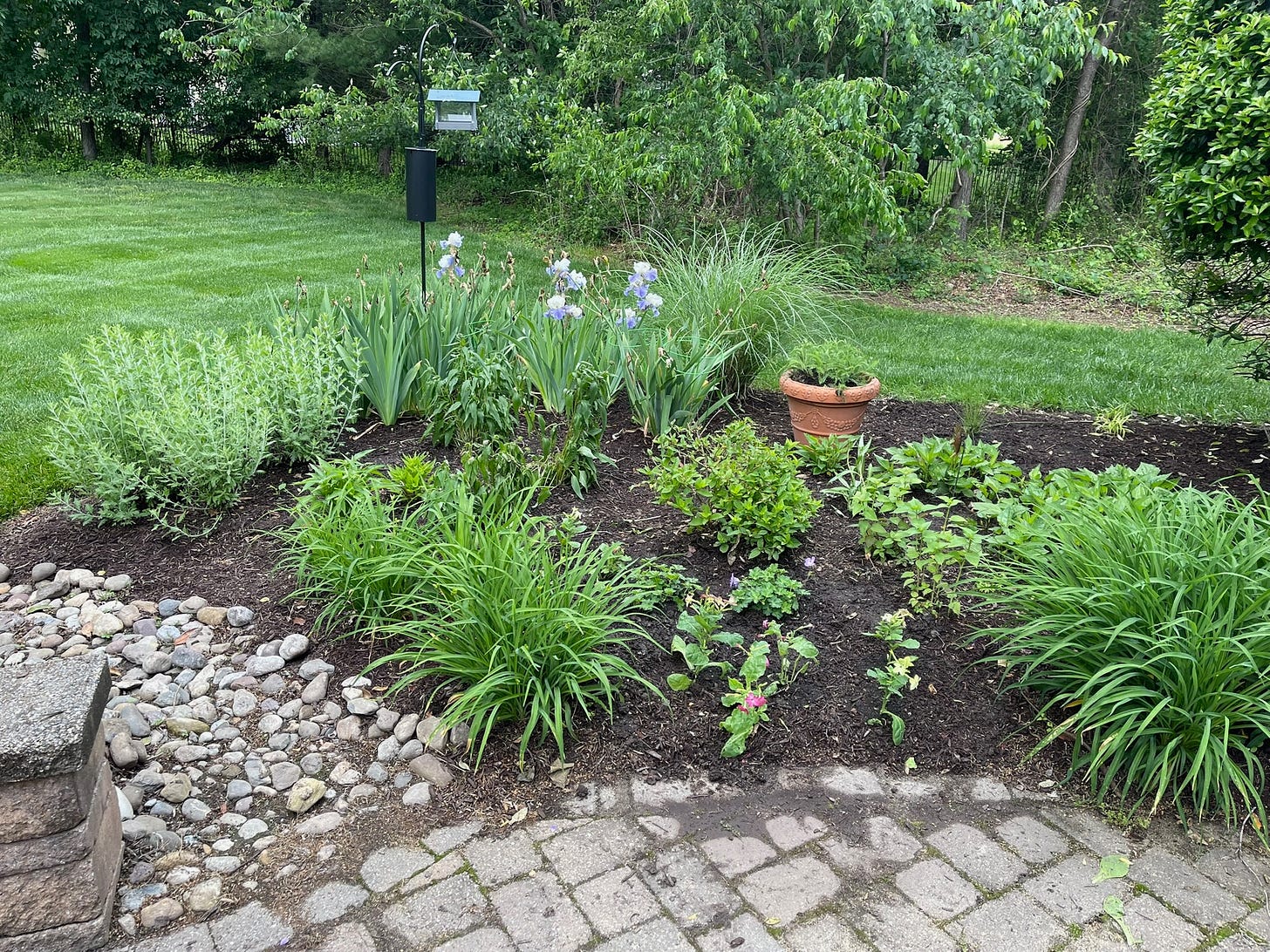
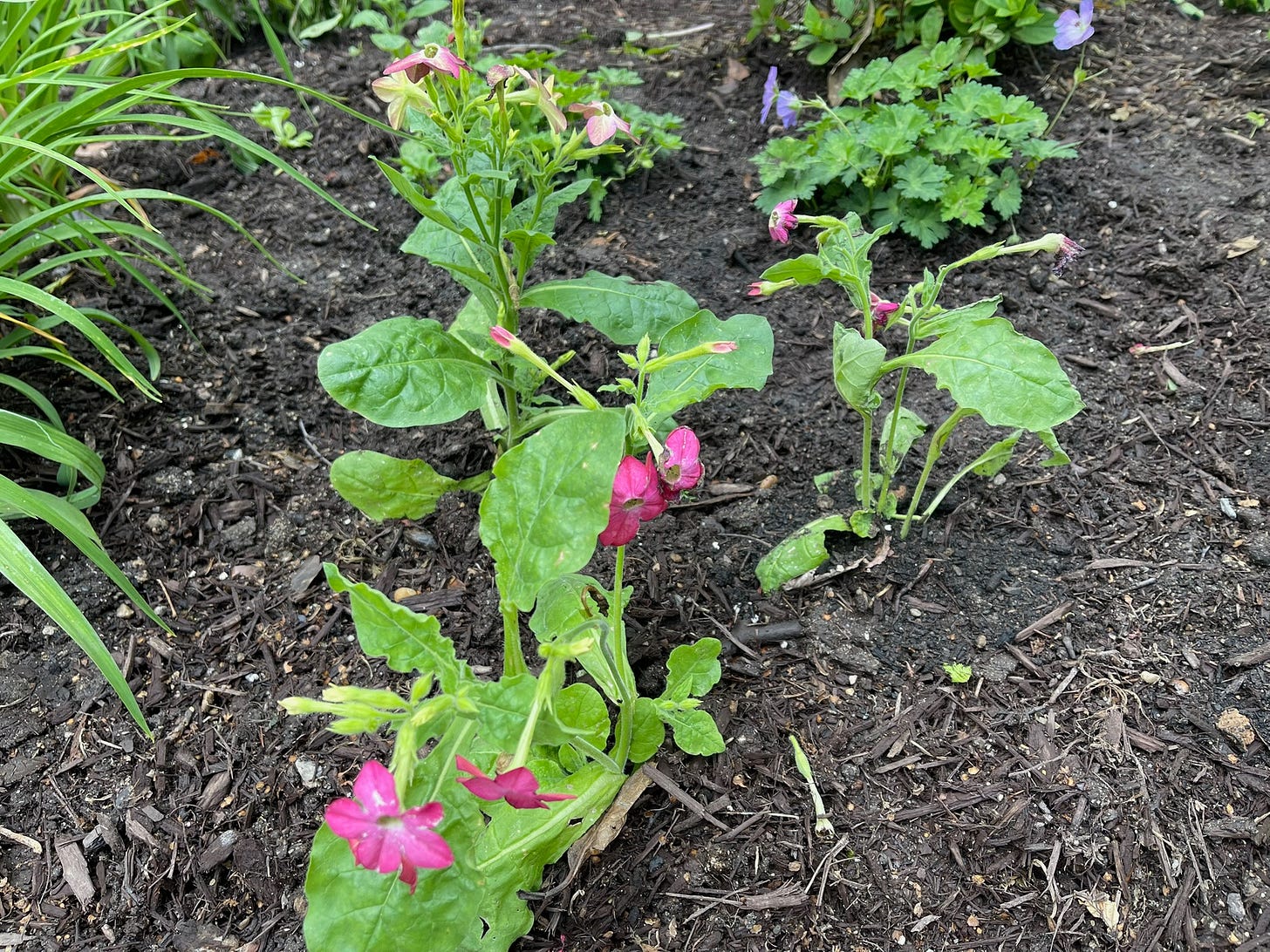
Great article! I've got all sun all day until the trees grow more.